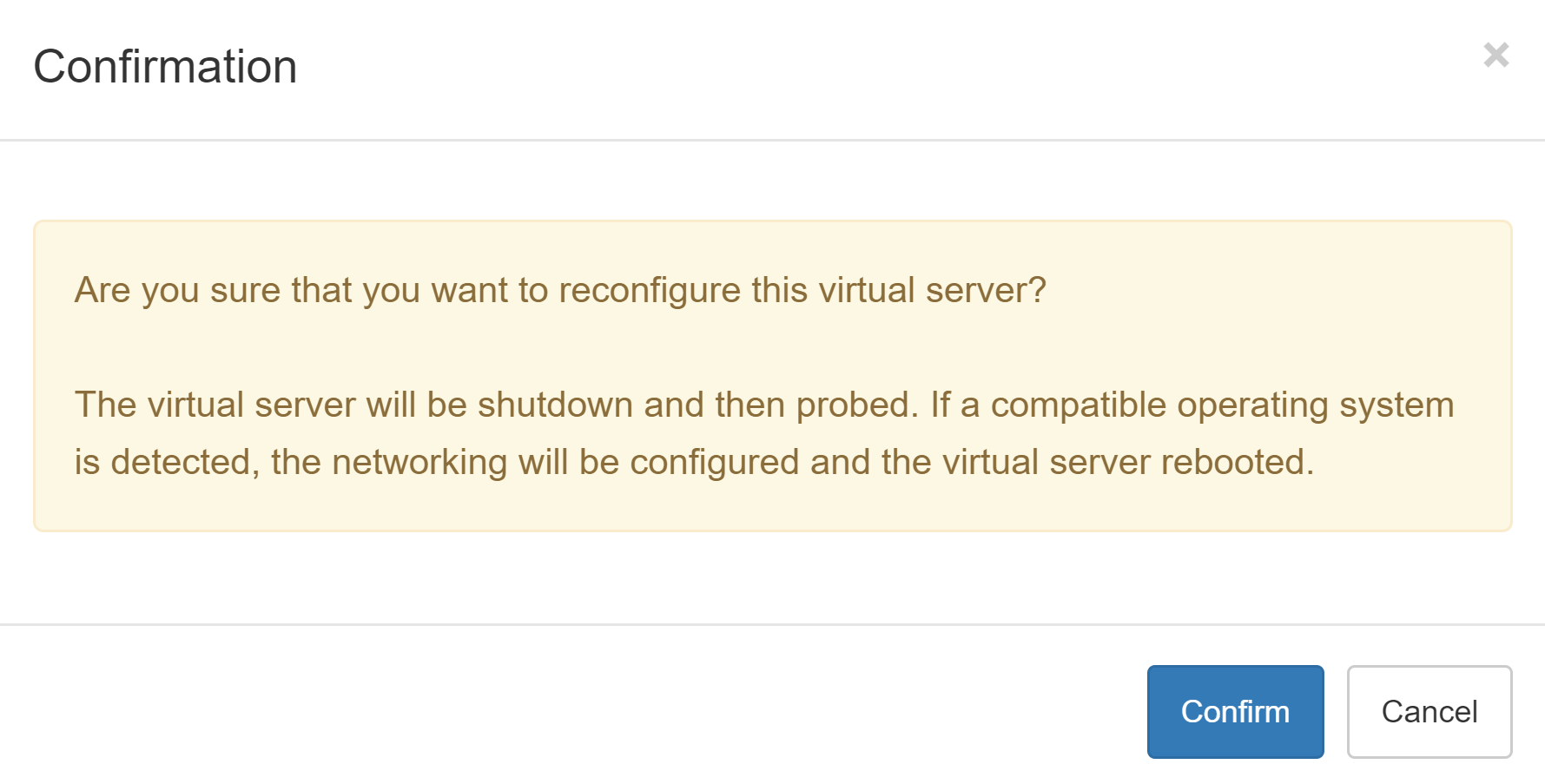Dashboard View
KVM-based VMs get automatically created by our system immediately after the payment is received for the associated order.
Once the VM is created you will get access to the service's dashboard, which is located in your client's area panel.
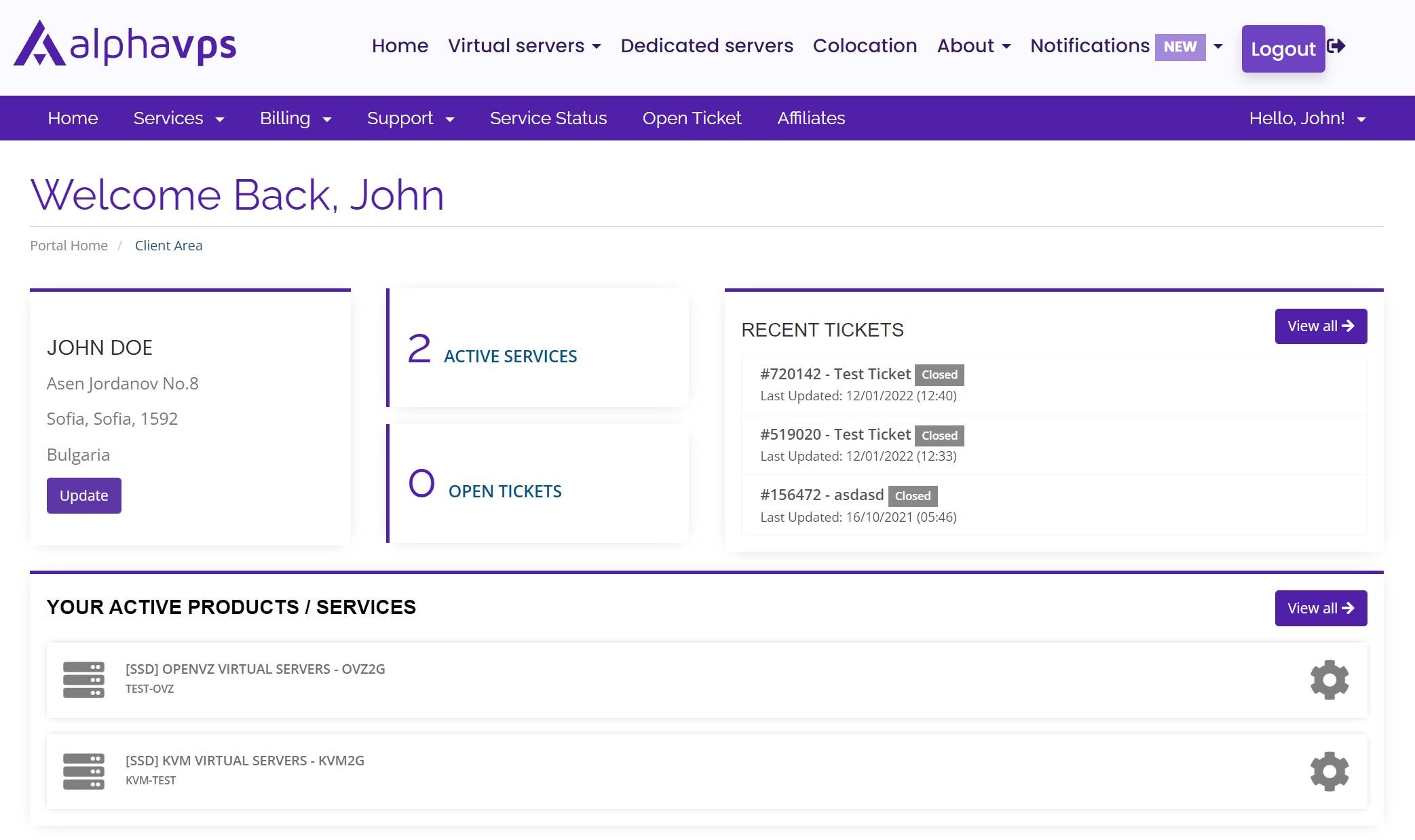
List of services
When you click on the "Active services" button you will be redirected to a list of the currently active services in your account.
You can also click directly on the VPS from the "Your active products/services" field below.
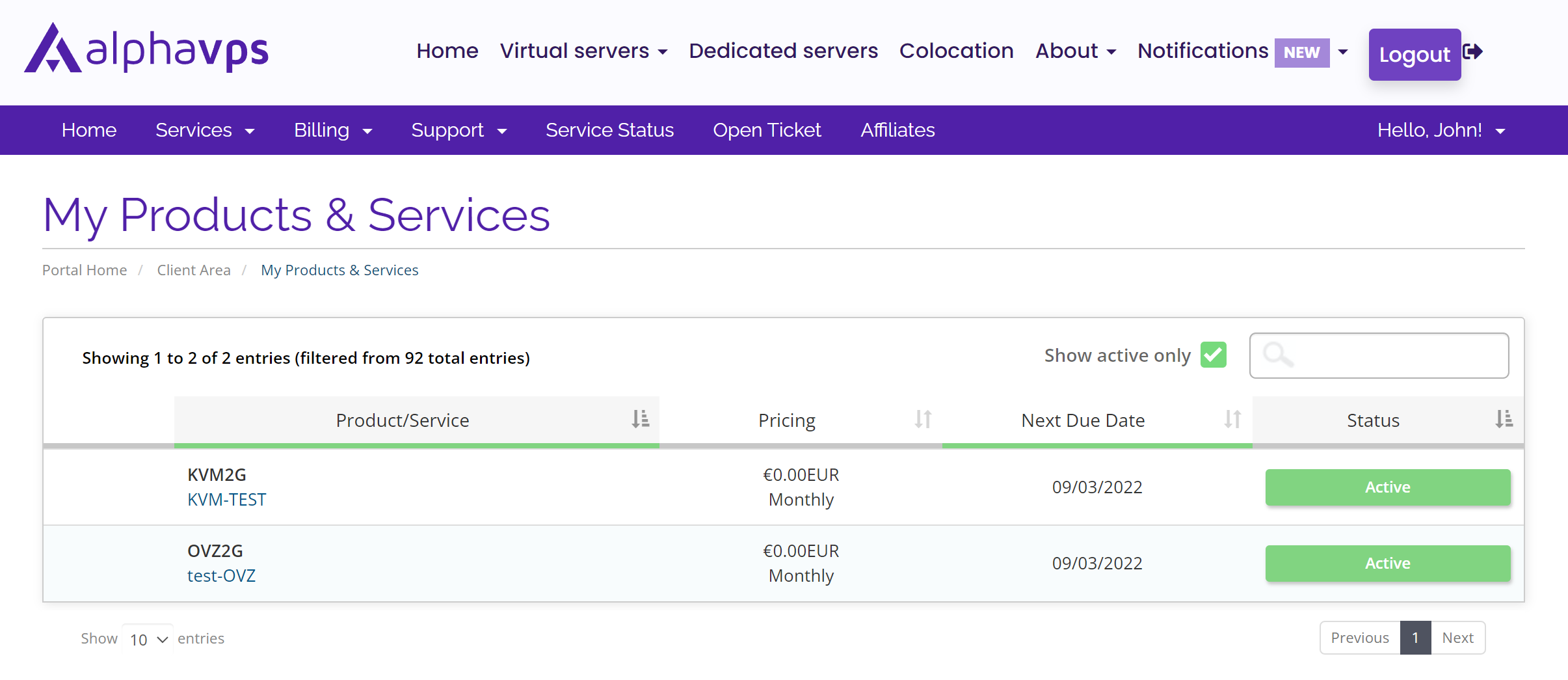
Control Panel
Click on the desired VPS and you will be redirected to its dashboard. From there you can manage the VPS - you have access to a variety of information and functions for it.

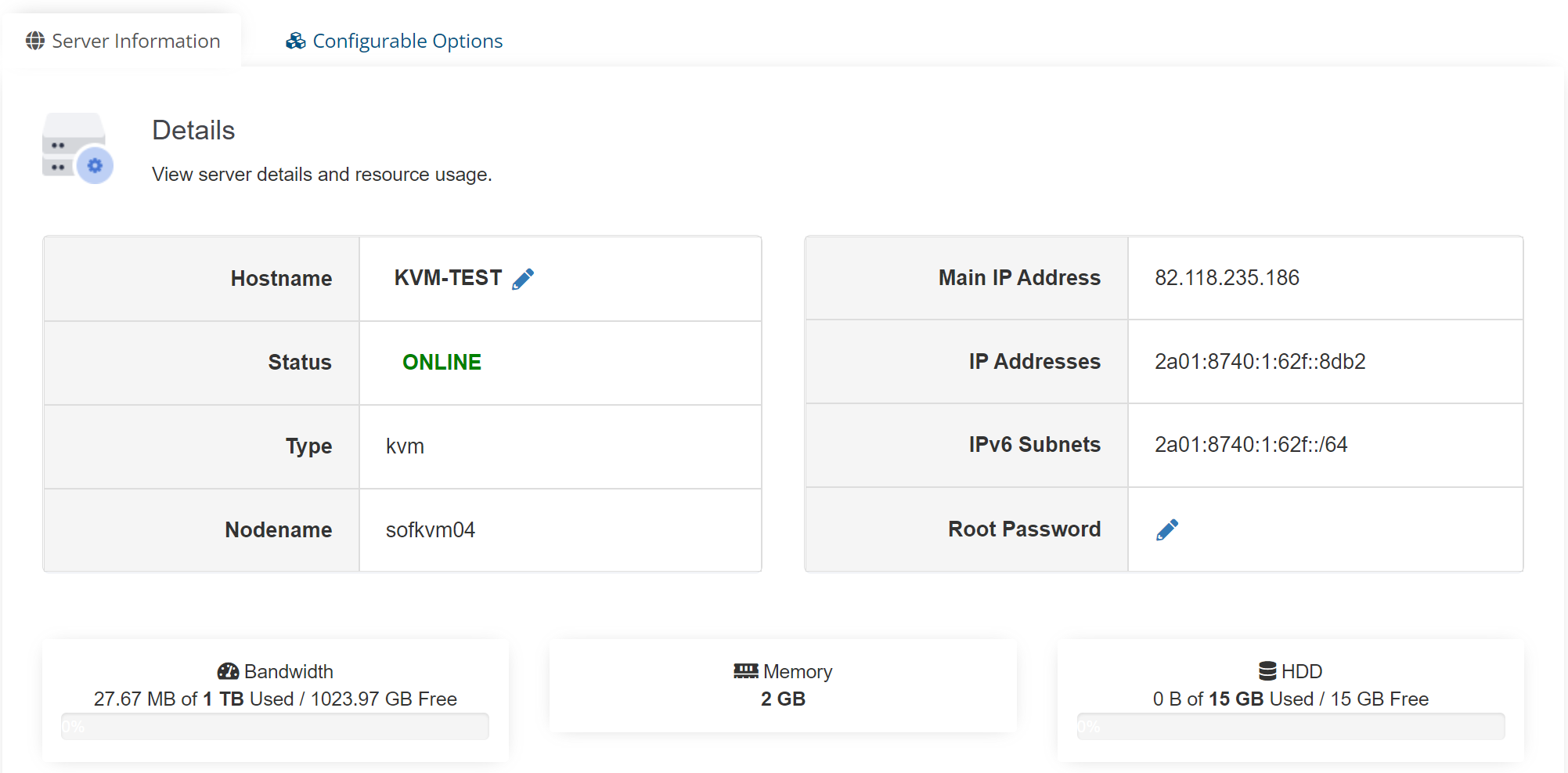
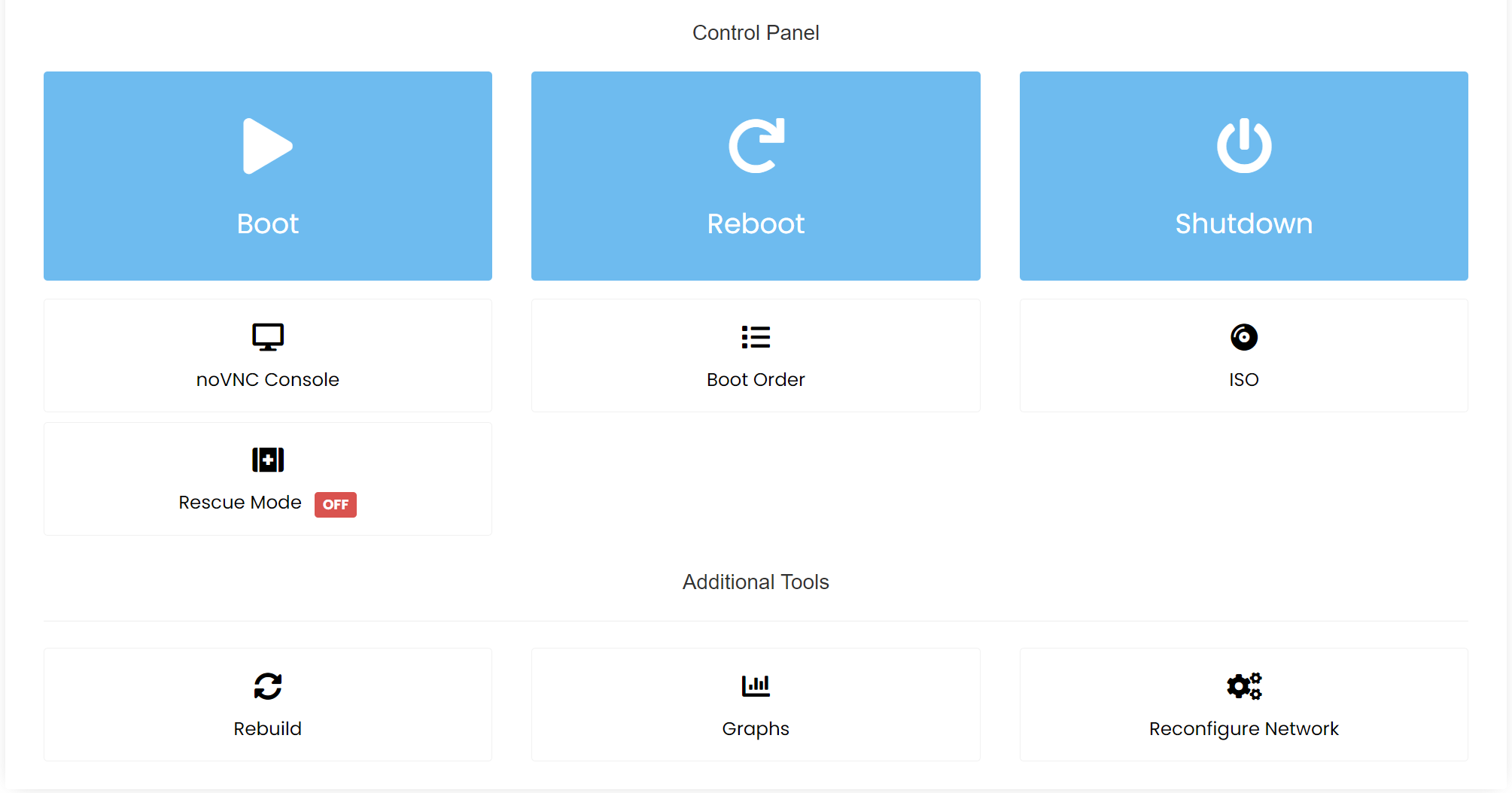
Let's take a closer look at each of the objects there. We will start at the top.
The first two visible buttons are Upgrade and Request cancellation.

From the "Upgrade" button you can submit an upgrade order for the VPS. Once the upgrade order is processed and paid, our system will automatically expand the available resource of the VPS. A reboot will be required.
From the "Request Cancellation" button you can submit a cancellation request, which will cancel the service. We highly advise contacting the support team prior to doing this. If there is any issue that bothers you, the support team will gladly hear you out and assist you.
Overdue invoice reminder is visible when the VM's associated invoice is not paid for the current billing period. You can proceed with the payment by clicking the "Pay invoice" button to the right of the field.

Billing Overview
You can get information regarding the VM's registration date, current billing cycle, next due date, preferred payment method, and price per billing cycle /recurring amount/.

VPS Information
Here can be viewed the VM's hostname /it can be changed from the pencil icon/, current status, virtualization type, host node, on which the VM is located, Main IP address, other assigned IP addresses, assigned IPv6 subnet, root password /the password cannot be viewed, because of security reasons, but can be changed from the pencil icon/.
Below them can be viewed bandwidth limit and usage, and available RAM.
Boot, Reboot, and Shutdown buttons from which you can initiate these actions.

noVNC console, Boot Order, ISO, and Rescue mode buttons.

noVNC console
Provides out-of-band access for the VM, which is quite convenient for debugging connectivity issues. If the screen is black, make sure to tap on a keyboard button, this will "wake" the VM screen. The "CTRL+ALT+DEL" button can be seen in the upper right corner.

Boot Order
Adjusting the boot order of the VPS. Select the desired boot order from the dropdown menu and click on the "Change" button.
When mounting an ISO file the boot order will need to be adjusted to CD-ROM 1st/HDD 2nd or CD-ROM only.
Mounting an ISO image
Select the desired ISO file and click on the "Mount" button. Once the ISO file is no longer needed make sure to unmount it and change the boot order back to HDD 1st/CD-ROM 2nd.
Enabling Rescue mode
Rescue mode allows you to boot your downed VPS into a minimal OS install. Here you can either repair the virtual machine or backup your data for restoration. When rescue mode is enabled you will be provided with the new login credentials for accessing the VPS.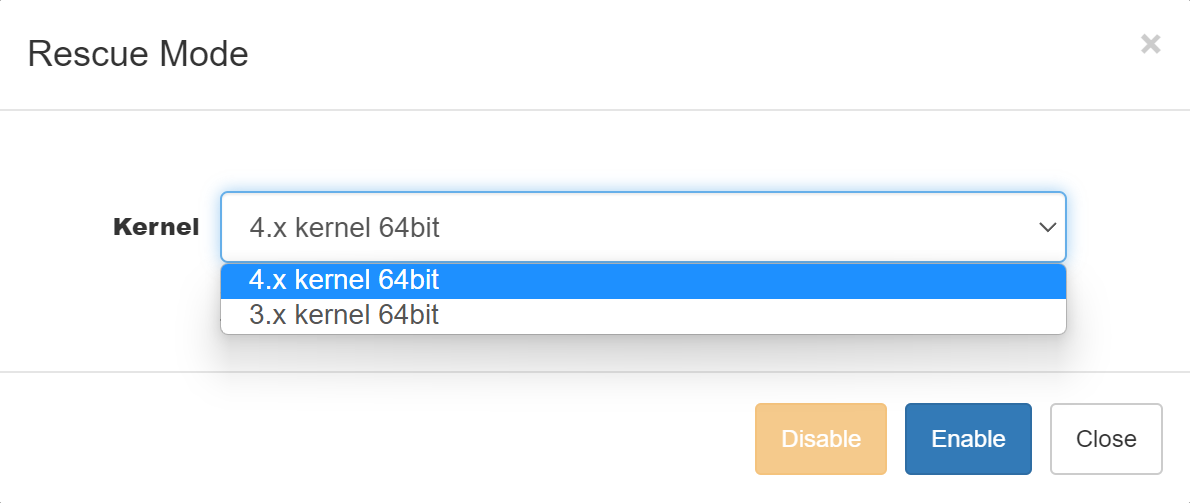
Additional tools
Rebuild Button, Graphs, and Reconfigure network button

The rebuild button provides you with the ability to initiate a reinstall of your VM on your own. You can choose from a variety of Linux-based templates.
Select the desired OS and click on the rebuild button at the bottom. Make sure that you note down your new root password.

Network traffic usage graph.

Reconfigure network button, which will bring the VM's network configuration to its default state.
